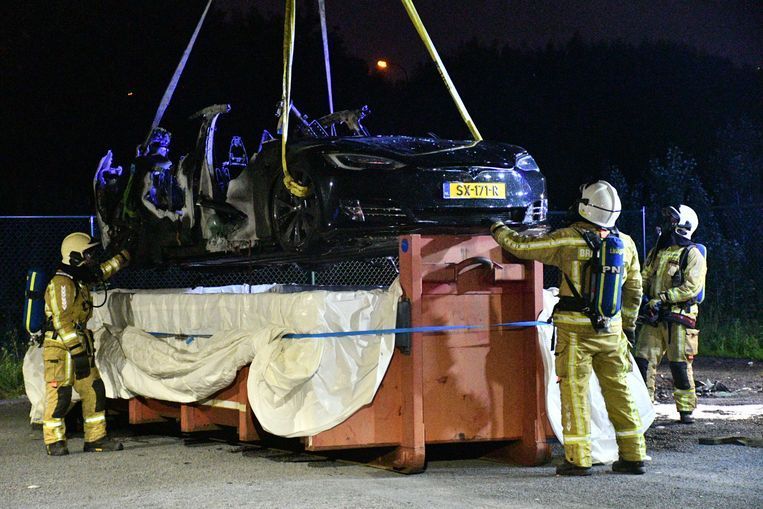Tesla vehicle burned to the ground while plugged in at the Supercharger station
A Tesla Model S has caught on fire and completely burned down while plugged in at Tesla’s Supercharger station in Antwerp, Belgium.
The local news is reporting that the Model S caught on fire a little while after starting to charge (translated from Dutch):

“The driver of the car had parked it at a so-called ‘Supercharger’, a fast charging station, at the Novotel at Luithagen-Haven. When he returned a little later, his Tesla and the supercharger were lit up. Possibly there was a technical problem before charging.”
The fire brigade used an interesting technique to extinguish the fire and make sure it doesn’t reignite, which has been an issue with electric car fires.

Antwerp’s fire department submerged the car into a pool of water:
“Moments later, the fire was extinguished by the fire department by immersing the car in a container with water. To ensure that the fire does not flare up again, the Tesla, or what remains of it, remained in the water for the rest of the night.”
We contated Tesla about the situation and we will update if we get an answer.
Tesla fires at Supercharger stations have been quite rare, but it’s not the first example.
Back in 2016, a Tesla Model S caught fire and burned down while charging at a Supercharger station in Norway.
At the time, the automaker said that the cause of the fire was a short-circuit in the car and though the automaker doesn’t know why the short-circuit happened, it nonetheless pushed a software update to its fleet to “provide extra security during charging”.
More recently, Tesla updated its battery management software after several Tesla Model S vehicles have caught on fire seemingly on their own without any accident.

Electrek’s Take
It seems like there have been many Tesla fires lately and they seem to all be Model S vehicles. We know of at least 4 in the past 2 months.
To be fair, thousand more gas-powered cars have caught on fire during those two months.
What’s more worrying about the Tesla fires is that we don’t know much about the cause of the fires.
If the fire started after connecting to the Supercharger, it’s important to understand what happened.
Like with the situation in Norway 3 years ago, it might be difficult to pinpoint the cause due to the state of the Model S, which is almost completely burned down.
Either way, I think it’s fair to point out that there have been millions of charging sessions on the Supercharger network at this point and only a handful of incidents like this one.
